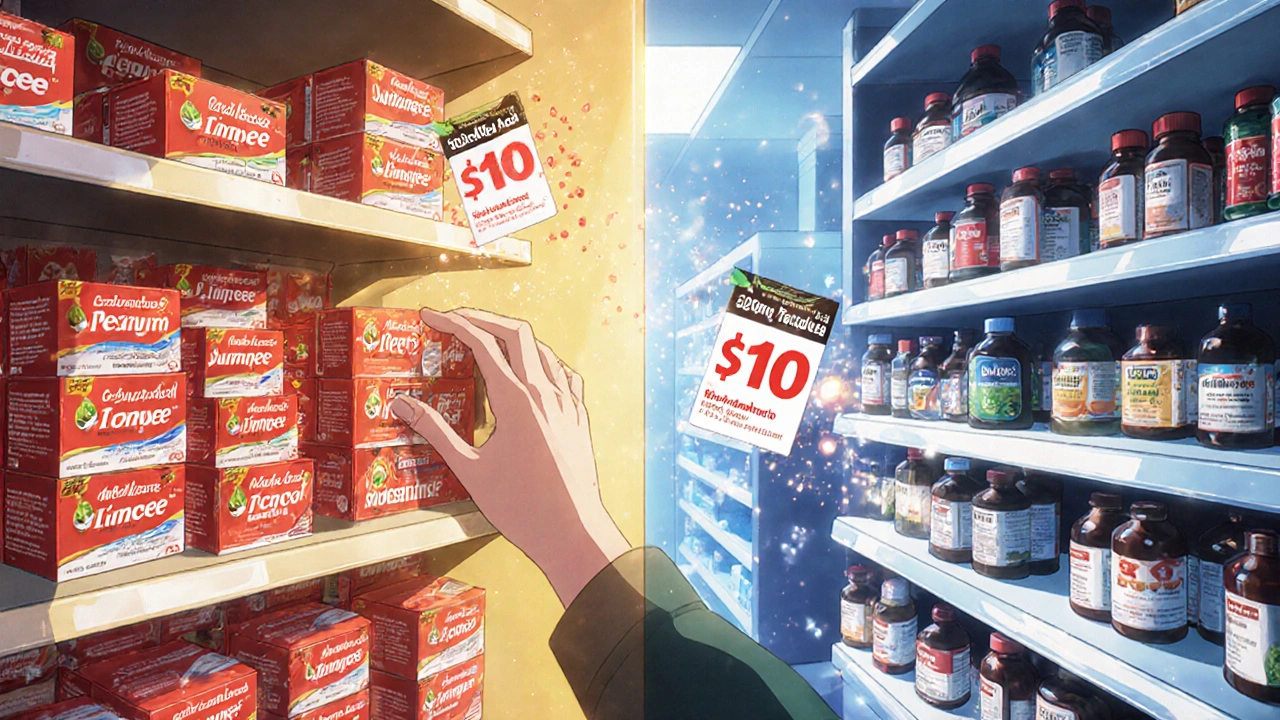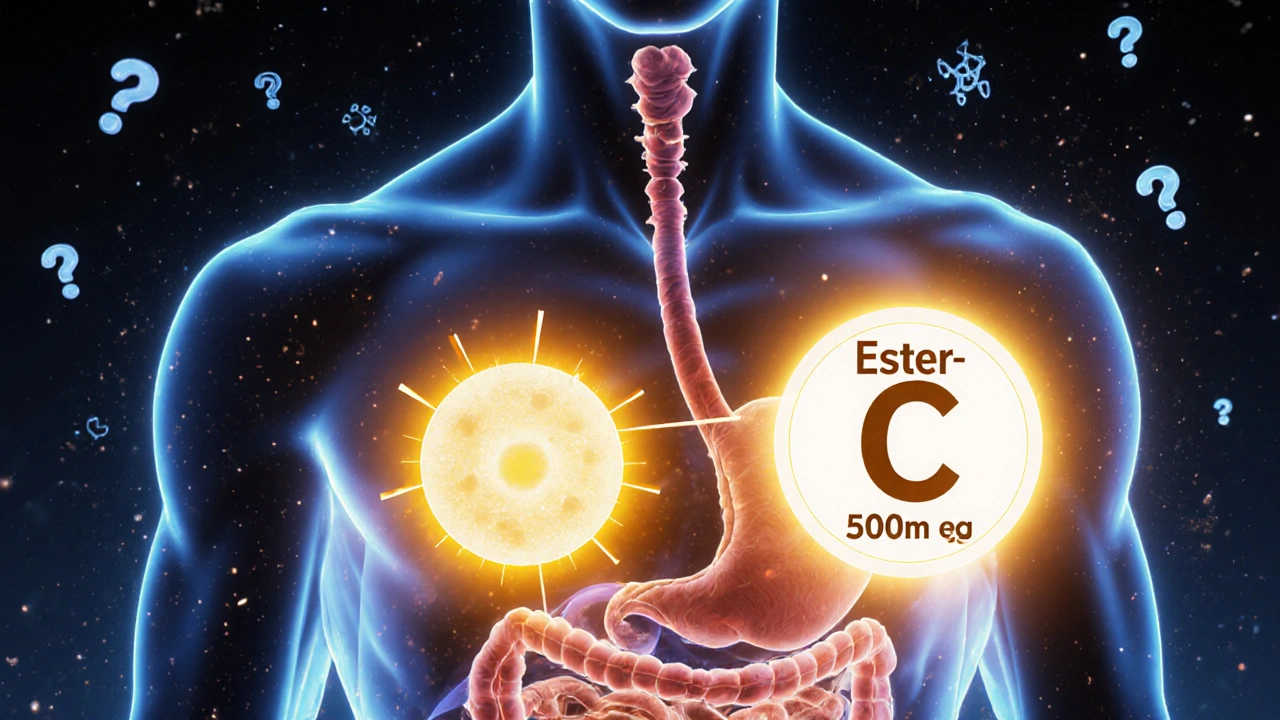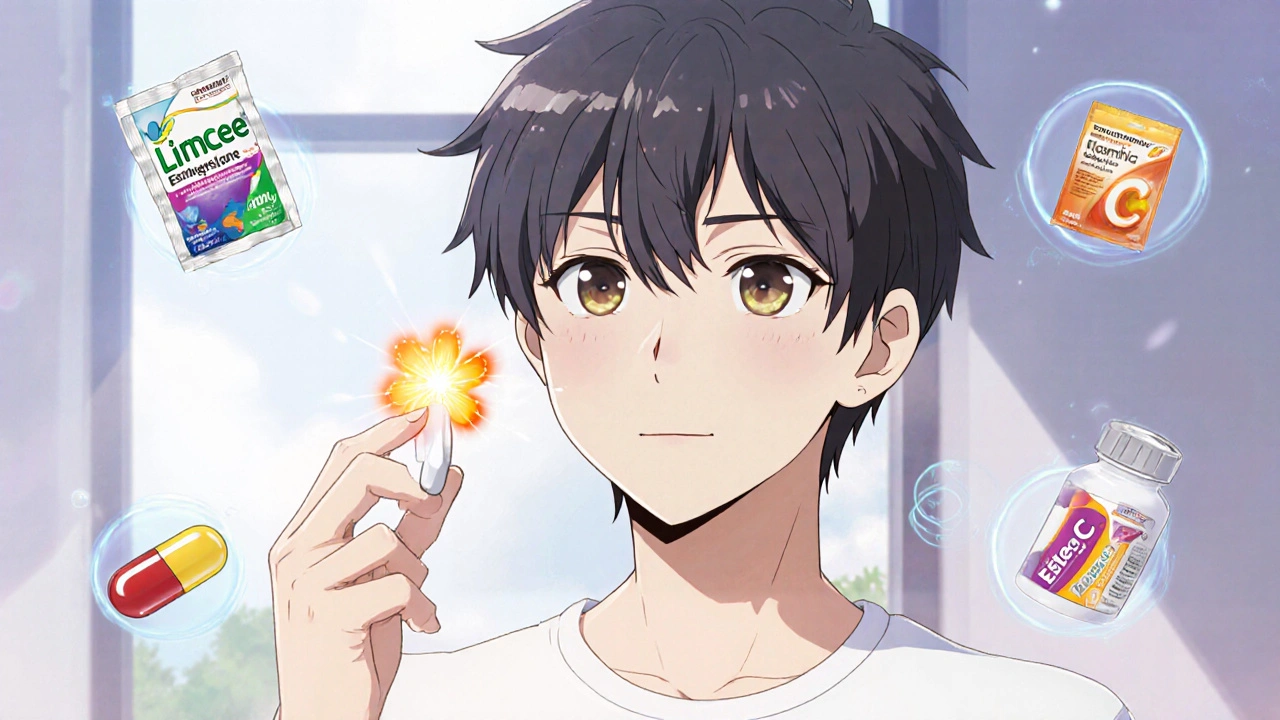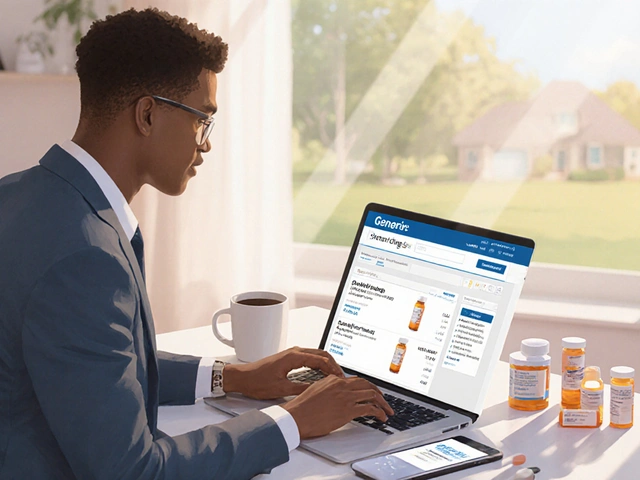Vitamin C Safety Calculator
Vitamin C Safety Checker
Check if your daily vitamin C intake is within safe limits based on guidelines from the National Institutes of Health.
What is Limcee, and why do people take it?
Limcee is a brand of ascorbic acid tablets commonly sold in India and other parts of Asia. Each tablet contains 500 mg of pure vitamin C, also known as ascorbic acid. It’s an over-the-counter supplement used to prevent or treat vitamin C deficiency, support immune function, and help with wound healing. Many people take it when they feel a cold coming on, or as a daily wellness habit.
But Limcee isn’t the only option. With so many vitamin C products on the shelf - from chewables to effervescent tablets to capsules - how do you know which one actually works for you? Let’s break down the most common alternatives and how they stack up against Limcee.
How Limcee compares to other vitamin C forms
Not all vitamin C supplements are the same. The active ingredient in Limcee is ascorbic acid, which is the most studied and bioavailable form of vitamin C. But some brands mix it with other compounds like sodium ascorbate or calcium ascorbate, which are less acidic and easier on the stomach. Others add bioflavonoids, zinc, or even rose hips, claiming they boost absorption.
Here’s the truth: your body absorbs ascorbic acid just fine - whether it’s in a plain tablet like Limcee or in a fancy blend. Studies from the National Institutes of Health show no significant difference in absorption between pure ascorbic acid and buffered forms in healthy adults. So if your stomach handles acid well, there’s no real advantage to paying extra for "gentler" versions.
Top alternatives to Limcee and how they differ
Here are five popular alternatives, each with a different twist:
- Centrum Silver Vitamin C - This is a multivitamin with 60 mg of ascorbic acid. It’s designed for older adults and includes other nutrients like vitamin D and zinc. But if you’re taking it just for vitamin C, you’d need to take five tablets to match one Limcee tablet. It’s not a direct substitute.
- Nature Made Vitamin C 500 mg - This is probably the closest Western equivalent to Limcee. Same dose, same active ingredient, no fillers. It’s widely available in the U.S., Canada, and Australia. Price-wise, it’s often cheaper per tablet than Limcee when bought in bulk.
- Ester-C (Calcium Ascorbate) - Marketed as "gentler on the stomach," Ester-C uses a patented process to create calcium ascorbate. Some users report less acid reflux. But independent lab tests show it doesn’t stay in your bloodstream longer than regular ascorbic acid. You’re paying more for marketing, not better results.
- Emergen-C - These are fizzy powder packets. Each contains 1,000 mg of vitamin C, plus B vitamins and electrolytes. Great if you hate swallowing pills or want something quick during travel. But they’re loaded with sugar (up to 9 grams per packet) and artificial flavors. Not ideal for daily use if you’re watching your sugar intake.
- Swisse Vitamin C + Zinc - Popular in Australia and New Zealand, this combines 500 mg of ascorbic acid with 10 mg of zinc. Useful if you’re trying to support immunity during flu season. But again, you’re getting extra ingredients you might not need. If you already take a multivitamin, this could lead to overdosing on zinc.
Cost, availability, and where to buy
Limcee is inexpensive - often under $0.10 per tablet in India. In Australia, it’s available online through Indian pharmacies or import sites, but shipping can take weeks and prices jump to $0.30-$0.50 per tablet. Nature Made or Swisse are easier to find in local chemists like Chemist Warehouse or TerryWhite Chemmart. You’ll pay $0.15-$0.25 per tablet, but you get faster delivery and local customer support.
Online pharmacies like Amazon or iHerb offer bulk deals on Nature Made or NOW Foods vitamin C. A 500-count bottle can drop the cost to under $0.08 per tablet. That’s cheaper than Limcee when you factor in international shipping and taxes.

Who should stick with Limcee?
Limcee is a solid choice if:
- You’re on a tight budget and don’t mind ordering from overseas
- You’re already used to taking it and your body tolerates it well
- You don’t need extra ingredients like zinc or bioflavonoids
It’s not ideal if you have acid reflux, sensitive teeth, or a history of kidney stones. In those cases, buffered forms like Ester-C or liposomal vitamin C might be better.
Who should try an alternative?
Consider switching if:
- You want faster access - local brands are in stock now
- You’re looking for added benefits - zinc, bioflavonoids, or vitamin D
- You dislike swallowing pills - try effervescent or gummy forms
- You’re watching sugar - avoid Emergen-C and flavored gummies
For most people, a simple 500 mg ascorbic acid tablet from a trusted brand like Nature Made or NOW Foods is just as effective as Limcee - and often more convenient.
What about vitamin C gummies?
Gummies are popular with kids and adults who hate pills. But they’re not a great substitute. Most contain only 100-250 mg of vitamin C per gummy, meaning you’d need to eat 2-5 to match one Limcee tablet. They’re also full of sugar, corn syrup, and artificial colors. Some brands even use gelatin from non-vegetarian sources. If you’re taking them for health, you’re trading real benefits for convenience - and possibly adding extra calories and sugar to your diet.
Can you take too much vitamin C?
The tolerable upper limit for adults is 2,000 mg per day. Taking more than that can cause diarrhea, nausea, or stomach cramps. In rare cases, long-term high doses (over 1,000 mg daily) may increase the risk of kidney stones in people with a history of them.
Limcee at 500 mg per tablet is safe for daily use. But if you’re combining it with a multivitamin or another supplement, check the total. You don’t need megadoses unless you’re under medical supervision for a deficiency.

Real-world tips for choosing your vitamin C
- Check the label: Look for "ascorbic acid" as the first ingredient. Avoid "proprietary blends" - they hide how much vitamin C is actually in there.
- Buy in bulk: A 500-count bottle of plain ascorbic acid costs less per dose than small packs or fancy brands.
- Store it right: Keep vitamin C away from heat and light. It breaks down over time. A cool, dark cabinet is better than the bathroom.
- Don’t assume "natural" means better: Rose hips or acerola cherry extracts may sound more wholesome, but they contain far less vitamin C than pure ascorbic acid. You’d need to take 10x the dose to get the same amount.
Final verdict: Is Limcee the best?
Limcee is a no-frills, affordable, effective source of vitamin C. But it’s not the only good option. If you’re in Australia and want something you can grab off the shelf today, Nature Made or Swisse are just as reliable. If you’re budget-conscious and don’t mind waiting for shipping, Limcee still holds up.
The real question isn’t which brand is better - it’s which one fits your life. If you’re healthy and just taking vitamin C to stay well, a simple 500 mg tablet will do. No need to overpay for fancy labels or added ingredients.
Frequently Asked Questions
Is Limcee the same as regular vitamin C?
Yes. Limcee contains 500 mg of ascorbic acid, which is the chemical name for vitamin C. It’s not a different type - just a branded version of the same nutrient found in most supplements.
Can I take Limcee every day?
Yes, 500 mg daily is safe for most adults. The recommended daily intake is 75-90 mg, so 500 mg is well above that - but still under the upper limit of 2,000 mg. Long-term use at this dose is common and generally well-tolerated.
Which is better: Limcee or Ester-C?
For most people, Limcee is just as effective. Ester-C is marketed as gentler on the stomach, but studies show no difference in absorption or duration in the body. You pay more for Ester-C, but you don’t get better results.
Does vitamin C prevent colds?
Regular vitamin C supplementation doesn’t stop most people from catching colds. But some studies show it may slightly shorten the duration or reduce severity - especially in people under physical stress, like athletes or those in cold climates. It’s not a magic shield, but it might help a little.
Are there side effects of taking Limcee?
Side effects are rare at 500 mg daily. High doses (over 1,000 mg) can cause stomach upset, diarrhea, or nausea. People with kidney stones or hemochromatosis should talk to a doctor before taking high-dose vitamin C regularly.
Where can I buy Limcee in Australia?
Limcee isn’t sold in Australian pharmacies. You can order it online through Indian pharmacy websites or importers like MedExpress or PharmaExpress. Delivery usually takes 10-20 days. For faster access, try Nature Made or Swisse from local chemists.
Next steps: What to do now
If you’re happy with Limcee and it works for you, keep using it. There’s no need to switch.
If you’re looking for something easier to get locally, pick up a bottle of Nature Made or NOW Foods 500 mg ascorbic acid. It’s the same active ingredient, often cheaper, and available in your neighborhood.
And if you’re unsure - talk to your pharmacist. They can help you pick a supplement that matches your health needs without overspending.





Comments (14)